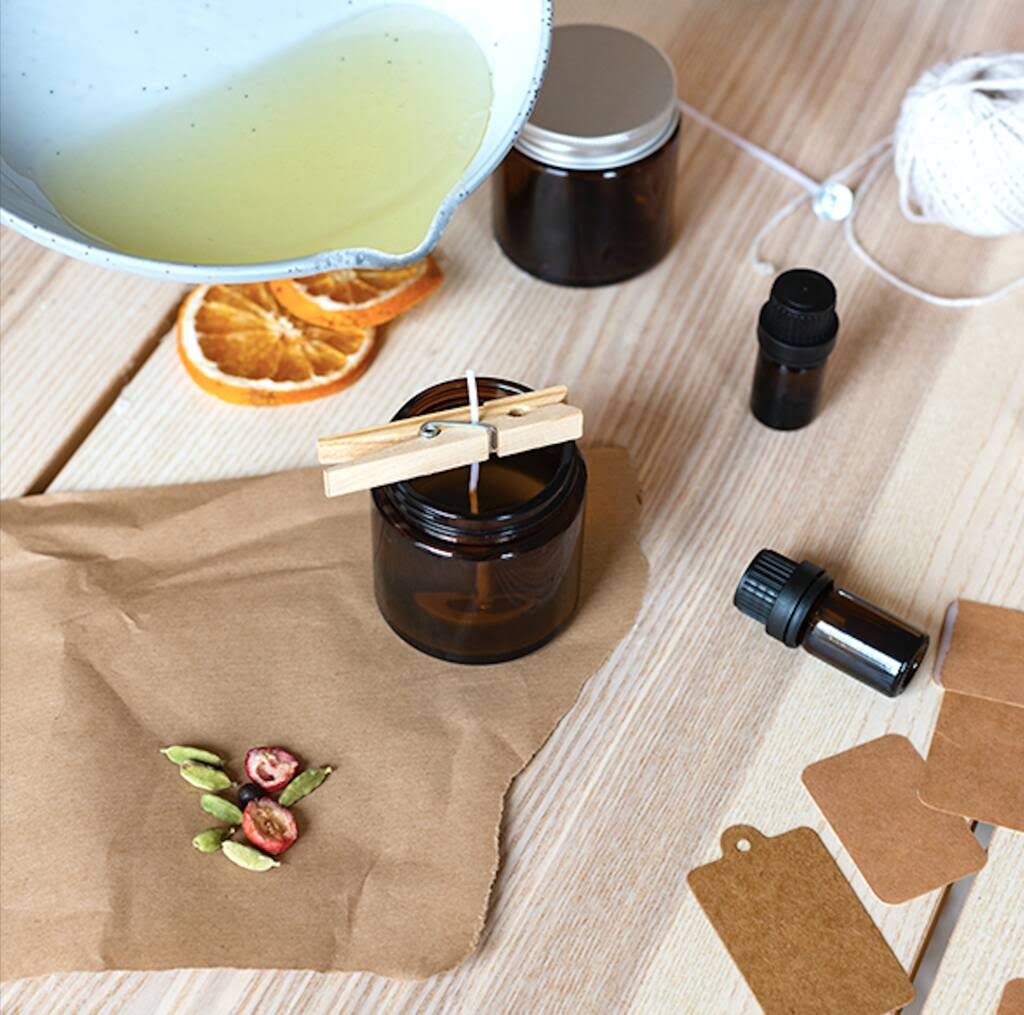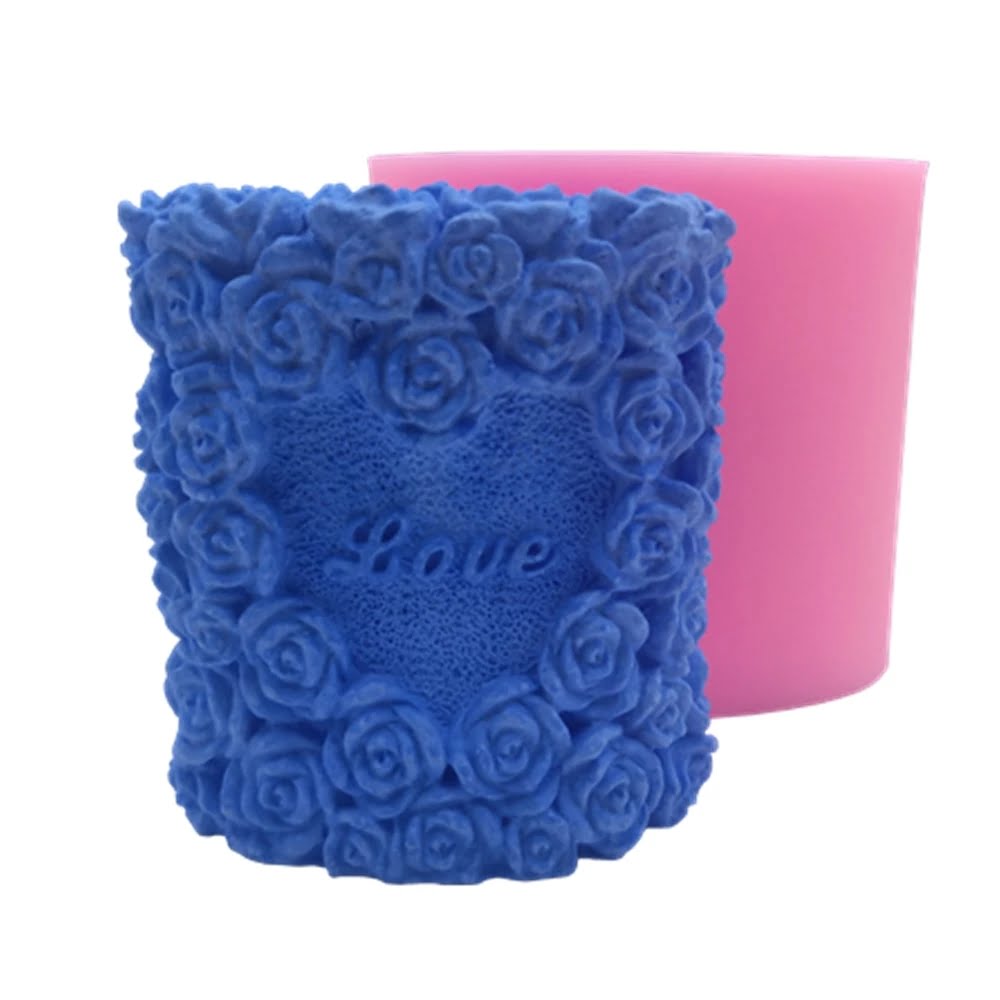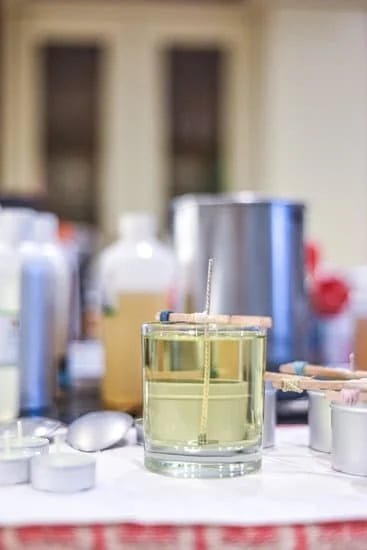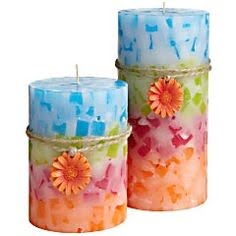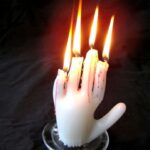Candle making is not just a hobby or a craft, but a science that involves the careful understanding and manipulation of various factors to achieve the perfect result. From selecting the right ingredients to mastering the techniques, every aspect plays a significant role in creating exquisite candles. One such crucial element in candle making is scent, which can elevate the entire experience and create a delightful aroma.
The importance of scent in candle making cannot be overlooked. The aroma that emanates from a burning candle can evoke memories, create ambiance, and even improve mood and well-being. Whether you prefer floral notes, fruity scents, or warm and cozy aromas, the choice of fragrance is an essential part of the candle-making process.
When discussing scents in candle making, one term often comes up – cent throw. Cent throw refers to how well a fragrance disperses into the surrounding space when the candle is burning. It measures the strength and intensity at which the scent is released. Understanding this concept is crucial for achieving optimum scent performance and creating candles with exceptional fragrance.
In this article, we will delve deeper into what cent throw means in candle making. We will explore its significance, demystify related terminology such as cold and hot cent throw, uncover the factors affecting cent throw and how to enhance it. Additionally, we will provide step-by-step instructions for testing cent throw in your candles to ensure you achieve maximum scent diffusion every time. So let us embark on this fragrant journey into mastering cent throw in candle making.
The Importance of Scent in Candle Making
In the world of candle making, scent is a crucial element that can elevate the overall experience of burning a candle. The aroma that fills the air when a candle is lit can create a delightful ambiance and evoke various emotions and memories. The importance of scent in candle making cannot be overstated, as it plays a significant role in creating a unique and enjoyable sensory experience for individuals.
Creating an Atmosphere
One of the main reasons why scent is essential in candle making is its ability to create an atmosphere. Each fragrance has its own character and can set a specific mood or tone in any space.
For example, floral scents like lavender or jasmine can create a calming atmosphere, making them ideal for relaxation or meditation. On the other hand, citrus or fruity scents such as lemon or strawberry can bring about feelings of energy and freshness, making them suitable for spaces where people want to feel invigorated.
Eliciting Emotions and Memories
Scents have unique connections to our emotions and memories. Certain aromas have the power to instantly transport us back in time, evoking specific memories or emotions associated with those scents. For instance, the smell of freshly baked cookies might remind someone of their childhood or spending time with loved ones. By infusing candles with scents that provoke positive emotions or fond memories in people, candle makers have the ability to enhance their customers’ experiences and create deeper emotional connections.
Aromatherapy Benefits
Another aspect of scent in candle making is its potential for aromatherapy benefits. Aromatherapy involves using fragrances from essential oils to promote holistic well-being and improve one’s mood or health.
When candles are made with essential oils known for their therapeutic properties, they can provide a range of benefits such as stress relief, relaxation, improved sleep quality, and even increased focus or concentration. By incorporating these types of scents into their candles, candle makers can offer customers a way to enhance their self-care routines and promote overall wellness.
Overall, the importance of scent in candle making lies in its ability to create a delightful aroma experience. Scents can set the atmosphere, elicit emotions and memories, and even provide aromatherapy benefits.
With the right combination of fragrance oils or essential oils, candle makers can craft candles that not only look beautiful but also fill homes with inviting scents that enhance people’s daily lives. Whether it’s for relaxation, rejuvenation, or creating a cozy ambiance, scented candles have become an integral part of many people’s lives due to the captivating power of fragrance.
What is Cent Throw? Unveiling the Mystery
Definition of Cent Throw
Cent throw refers to the ability of a scented candle to disperse its fragrance into the surrounding environment when it is lit. It is essentially the measure of how effectively a candle’s scent can fill a room and provide a delightful aroma experience. The term “cent” in cent throw stands for scent or fragrance, highlighting its importance in candle making.
The Importance of Cent Throw
Cent throw plays a crucial role in the success and overall satisfaction of candle makers and users alike. A well-performing cent throw enhances the ambiance of any space, creating a pleasant and inviting atmosphere. The choice of fragrance greatly influences the mood it sets, whether it be relaxing, energizing, or soothing.
For candle makers, cent throw contributes to their brand reputation as customers seek candles that provide long-lasting and impactful scents. Additionally, a strong cent throw can also increase sales by attracting potential buyers with its enticing aroma.
Factors Influencing Cent Throw
A variety of factors affect the cent throw of scented candles. One important factor is the quality of fragrance oils used in the candle-making process. High-quality fragrance oils are essential for achieving optimal scent performance, as they contain concentrated aromatic substances that are more likely to disperse efficiently when heated.
The type and wax blend used in the candle also have an impact on cent throw. Different waxes have varying abilities to hold and release fragrances. Soy wax, for example, has been praised for its excellent scent diffusion compared to other types of wax.
Furthermore, factors such as wick size, container size, and room temperature can all influence how effectively a scented candle’s fragrance spreads throughout a space. Therefore, understanding these factors and their effects allows candle makers to make informed decisions about their ingredients and ensure an exceptional cent throw in their creations.
Demystifying the Terminology
As a candle maker, it is crucial to understand the terminology associated with scent throw in order to create the perfect candles. Two terms that are commonly used in this context are cold and hot scent throw. Understanding the difference between these two will help you better control and manipulate the fragrance experience of your candles.
Cold scent throw refers to the aroma that is detected when the candle is not lit or unburned. This is the initial impression of the fragrance and sets the expectations for what will be experienced when the candle is actually burning. Cold scent throw can vary depending on factors such as the type and concentration of the fragrance oil used, as well as the quality of other ingredients in your candle.
On the other hand, hot scent throw refers to the aroma that is released when the candle is burning. This is often more intense compared to cold scent throw, as heat activates and releases more volatile components of the fragrance into the air. The hot scent throw plays a vital role in creating a delightful ambiance and filling a space with beautiful fragrances.
Understanding these two types of scent throw is essential because they can have different characteristics and strengths. A fragrance that may have a strong cold scent throw may not necessarily have a strong hot scent throw, or vice versa. It’s important to consider both aspects when selecting fragrance oils for your candles to achieve the desired scent performance.
| Cold Scent Throw | Hot Scent Throw |
|---|---|
| Unburned | Released while burning |
| Initial impression of fragrance | Creates ambiance and fills space with fragrance |
| Varies depending on factors such as type and concentration of fragrance oil, quality of ingredients | More intense and volatile compared to cold scent throw |
Factors Affecting Cent Throw
When it comes to creating the perfect scented candles, understanding the factors that affect cent throw is essential. Cent throw refers to the ability of a candle to release its fragrance into the surrounding space. It plays a significant role in creating a delightful and aromatic experience for candle enthusiasts.
To ensure optimum scent performance, several factors come into play. First and foremost, the type and quality of fragrance oil used play a crucial role in determining cent throw. Not all fragrance oils are created equal, so it’s important to choose high-quality oils specifically formulated for candle making. Research different brands and read reviews from experienced candle makers to find ones that have a reputation for strong cent throw.
Another factor that affects cent throw is the wax used in candle making. Different types of wax have different scent-carrying capacities, so it’s important to consider this when selecting your wax. Soy wax, for example, is known for its excellent scent throw abilities, whereas beeswax has a more subtle aroma. Additionally, factors like wick size and type, container shape and material, and even room temperature can influence cent throw.
To further enhance cent throw in your candles, proper wick selection is essential. A wick that is too small may not create enough heat to release the scent effectively, while one that is too large can cause an overpowering smell or even create smoke. Make sure to test different wicks before settling on the ideal one for your specific fragrance and container size.
In addition to fragrance oil and wax selection, proper curing time also plays a role in achieving optimal cent throw. Allowing your candles to cure for at least 48 hours after pouring will give the scent molecules time to bond with the wax properly, resulting in better diffusion when burned.
By taking into account these factors affecting cent throw and experimenting with various combinations of fragrances, waxes, wicks, and curing times, you can unlock the secrets to successful candle making and create candles that fill a room with delightful scents.
Testing Cent Throw in Candle Making
Achieving the perfect cent throw is crucial in candle making as it determines how well the fragrance disperses when the candle is burned. To ensure optimum scent performance, thorough testing is necessary. Here is a step-by-step guide on how to test cent throw in candle making:
- Choose a Testing Environment: Selecting the right environment for conducting cent throw tests is essential. Find a small, enclosed area, preferably away from drafts and other strong odors that could interfere with the test results.
- Prepare Test Candles: Pour a batch of candles using the specific fragrance you want to test. Be sure to use the same wax and wick type for consistency. Fluorinated polyethylene liners can also be used in tea light cups or votive holders to avoid any influence on scent diffusion.
- Cure the Candles: Allow the newly poured candles to cure for at least 48 hours before starting the test. This timeframe allows for proper scent development and ensures accurate results.
- Determine Burn Time: Decide on the appropriate burn time for your candles based on their size and wax type. For example, smaller candles may only need one hour of burn time, while larger ones may require up to four hours.
- Light and Observe: Ignite the candle and carefully observe its scent dispersion as it burns. Pay attention to how far the scent reaches and its overall strength throughout the testing environment.
- Record Results: Document your observations for each tested fragrance, including details such as burn time, scent strength, and distribution range. This record will help you compare different fragrances accurately.
- Repeat Tests: It’s important to repeat this process multiple times with various fragrances to gather enough data for comparison purposes. You can experiment with different combinations of fragrance oils until you find your desired cent throw.
By following this step-by-step guide, you can ensure that you have tested the cent throw of your candles thoroughly. Keeping accurate records will help you identify which fragrances perform best and allow you to make informed decisions when creating scented candles. Remember that testing cent throw is an essential part of the candle-making process, enabling you to deliver high-quality candles with a delightful aroma experience for your customers or personal enjoyment.
Troubleshooting Cent Throw Issues
One of the common challenges faced by candle makers is achieving the desired cent throw in their creations. Cent throw refers to the strength and diffusion of fragrance when a candle is burned. It determines how effectively a candle can fill a space with its delightful aroma.
However, candle makers may encounter certain issues that affect the cent throw of their candles. In this section, we will explore some common problems and provide solutions for fragrance lovers to troubleshoot these issues.
- Weak Cent Throw: One of the most frustrating problems faced by candle makers is when their candles emit a weak scent when burned. This can be due to various factors such as using low-quality fragrance oils or not using enough fragrance oil in the candle wax.
To solve this issue, it is crucial to invest in high-quality fragrance oils specifically designed for candles. Additionally, ensure proper measurement and use the recommended amount of oil per pound of wax. - Sooty Flame: Another problem that affects cent throw is when a candle produces a sooty flame, which not only diminishes the scent but also creates an undesirable smoky atmosphere. Sooty flames are often caused by using wicks that are too large or using fragrances with high concentrations of vanillin or other additives that contribute to soot production.
Select wicks that are appropriately sized for your candle‘s diameter and consider using fragrances with lower vanillin content to minimize soot production. - Inconsistent Scent Performance: Sometimes, candles may have inconsistent scent performance, where some batches have strong cent throw while others do not produce much fragrance at all. This issue can arise from improper mixing of fragrance oils into the wax or inconsistencies in pouring temperatures. Ensure thorough mixing of fragrance oils into melted wax before pouring and maintain consistent pouring temperatures throughout all batches to achieve consistent cent throw in your candles.
| Cent Throw Issue | Solution |
|---|---|
| Weak Cent Throw | Invest in high-quality fragrance oils and use the recommended amount per pound of wax. |
| Sooty Flame | Select appropriately sized wicks and consider using fragrances with lower vanillin content to reduce soot production. |
| Inconsistent Scent Performance | Mix fragrance oils into melted wax thoroughly before pouring and maintain consistent pouring temperatures across all batches. |
Enhancing Cent Throw
When it comes to candle making, achieving a strong and pleasant scent is crucial. After all, the aroma is what makes candles so enjoyable and inviting. To enhance the scent diffusion, there are a few proven tips and tricks that can be implemented.
One effective method for boosting scent diffusion is to use the right wick size. The size of the wick plays a significant role in how well the fragrance disperses throughout the room. A wick that is too small may not provide enough heat to fully melt the wax, resulting in a weaker cent throw.
On the other hand, a wick that is too large may produce too much heat, causing the scent to dissipate quickly without fully developing. Experimenting with different wick sizes can help find the perfect match for optimal scent diffusion.
In addition to selecting the right wick size, candle makers can also enhance cent throw by choosing high-quality fragrance oils. Using oils specifically designed for candle making ensures that they are formulated to effectively disperse their scents when mixed with wax.
It is important to thoroughly research and choose fragrance oils from reputable suppliers who prioritize quality control and offer a wide variety of scents. Testing different fragrance oils can help identify those that have an excellent cent throw and suit individual preferences.
Furthermore, proper candle placement can impact scent diffusion. Placing candles in areas where air circulation is limited or obstructed, such as corners or near walls, can inhibit their ability to distribute fragrance throughout a room. Instead, positioning candles in open spaces or near doorways allows air flow to carry their scents more effectively. It is also beneficial to light multiple candles in larger spaces or during special occasions when a stronger scent presence is desired.
By implementing these proven tips and tricks for enhancing cent throw, candle makers can ensure that their creations provide an exquisite aroma experience for all to enjoy. The combination of the right wick size, high-quality fragrance oils, and proper candle placement can significantly boost scent diffusion and create a welcoming atmosphere filled with delightful scents.
Choosing the Right Fragrances
When it comes to candle making, choosing the right fragrances is crucial in achieving the desired cent throw. Cent throw refers to how far and how strong the scent of a candle can travel when it is burning. Different scents have varying effects on cent throw, which is why understanding their impact is essential for creating candles with optimal scent diffusion.
Certain scents have a natural ability to travel further and fill a room more effectively than others. For example, citrus and floral scents tend to have a stronger cent throw as they are lighter and more volatile compared to heavier scents like musk or woodsy fragrances. These light scents easily disperse into the air, ensuring that their aroma reaches a larger area.
Additionally, the type of fragrance oil used can also play a significant role in cent throw. Fragrance oils formulated specifically for candle making often have enhanced properties that allow for better scent diffusion.
These oils are designed to evaporate slowly and release their fragrance gradually, resulting in a more consistent and long-lasting cent throw. It is important to remember that not all fragrance oils are created equal, so investing in high-quality oils can make a noticeable difference in the overall scent performance of your candles.
Another factor to consider when selecting fragrances is the personal preference of your target audience. People have different reactions and sensitivities to particular scents, so it is crucial to know your audience’s preferences before creating candles for them. Conducting surveys or market research can help you identify which scents are more popular among your target demographic and ensure that your chosen fragrances will be well-received.
Conclusion
In conclusion, understanding the concept of cent throw is crucial for candle makers who want to create candles with a delightful aroma experience. Through this article, we have explored the science behind candle making and the importance of scent in creating a captivating fragrance.
We have unveiled the mystery of cent throw and demystified the difference between cold and hot cent throw. Knowing these terminologies is essential in determining how well a candle’s fragrance will disperse when burned. Additionally, we have discussed the factors that can affect cent throw, such as wax type, wick size, and fragrance load.
To ensure optimum scent performance, it is necessary to test cent throw in candle making. This step-by-step guide provides a useful framework for conducting such tests and troubleshooting common issues that may arise. It is through these experiments and problem-solving techniques that candle makers can enhance cent throw and achieve optimal scent diffusion in their products.
Furthermore, choosing the right fragrances plays a significant role in determining the cent throw of candles. Different scents have varying strengths and characteristics that can impact how well they disperse when lit. By mastering these concepts and incorporating proven tips and tricks for enhancing cent throw, candle makers can create exquisite candles that captivate customers with their alluring scents.
In summary, mastering the art of cent throw allows candle makers to unlock the full potential of their creations by ensuring optimum scent performance. Through understanding the science behind fragrance diffusion, testing techniques, troubleshooting methods, and choosing appropriate fragrances, artisans can craft candles with exceptional aroma experiences. With each burn, these exquisite candles not only fill rooms with delightful scents but also bring joy and relaxation to those who enjoy them.
Frequently Asked Questions
What does throw mean on a candle?
“Throw” on a candle refers to the ability of the candle to release its fragrance into the surrounding space when it is lit. A strong scent throw means that the fragrance from the candle can fill a room, creating a pleasant and noticeable aroma. It is an important characteristic for those who desire a scented atmosphere.
Why does my candle have no scent throw?
There could be several reasons why your candle has no scent throw. One possibility is that you may not have allowed enough time for the wax to sufficiently melt and release the fragrance oils before extinguishing it, as some candles require a longer burn time to reach their full scent potential.
Another reason could be using an improperly matched size of the room with regards to candle size, as larger rooms may require candles with stronger scents or multiple candles placed strategically. Additionally, poor quality or expired candles might also result in weak or nonexistent scent throw.
What does scent throw mean?
Scent throw refers to how easily and strongly a candle releases its aroma into the air when it is burned. A good scent throw ensures that when a candle is lit, it disperses its fragrance effectively throughout the intended area, creating a pleasant and inviting environment.
A strong scent throw allows individuals to enjoy the fragrance even from a distance, while a weak scent throw may limit its impact and fail to create the desired ambiance. Scent throw can vary depending on factors such as the type of wax used, quality of fragrance oils, wick size, and burn time of the candle among others.

Welcome to my candle making blog! In this blog, I will be sharing my tips and tricks for making candles. I will also be sharing some of my favorite recipes.

